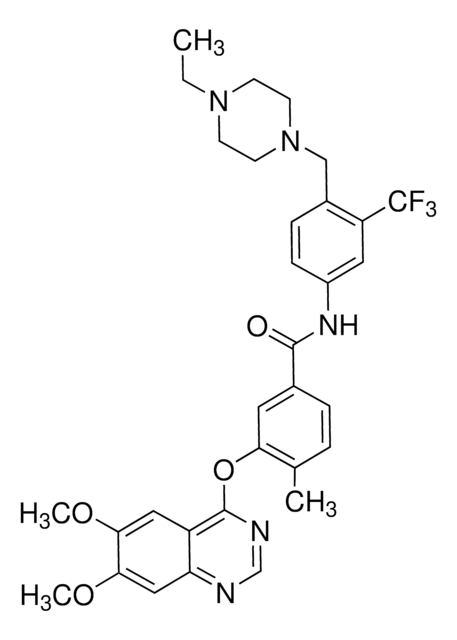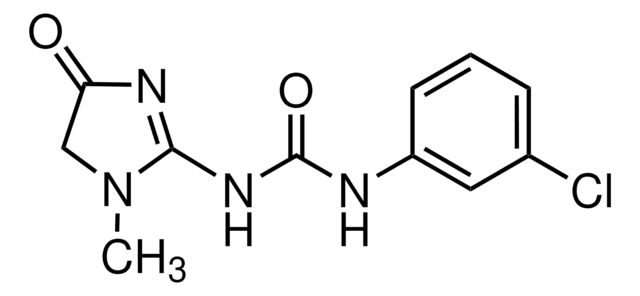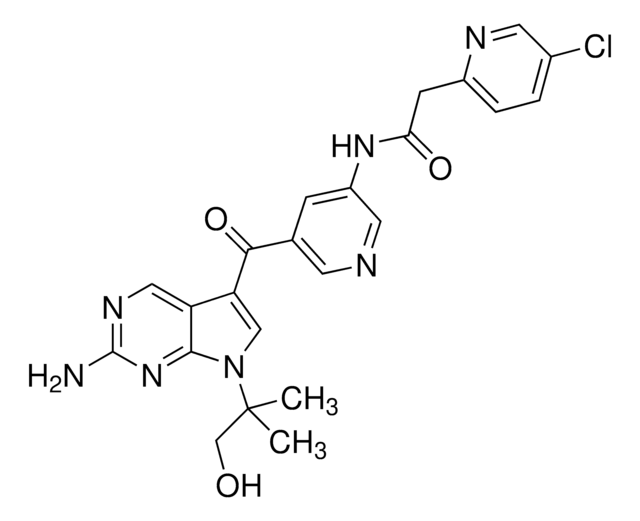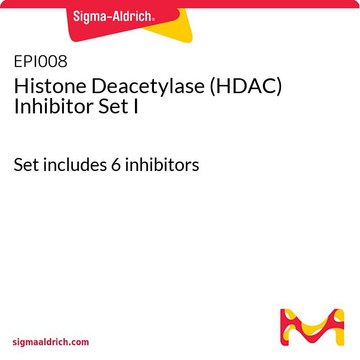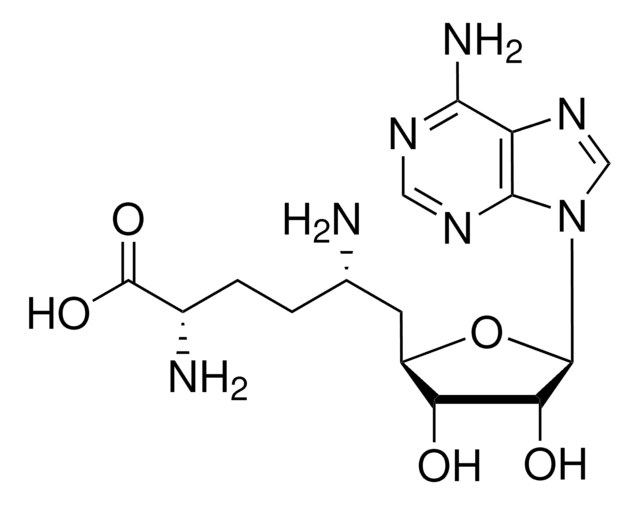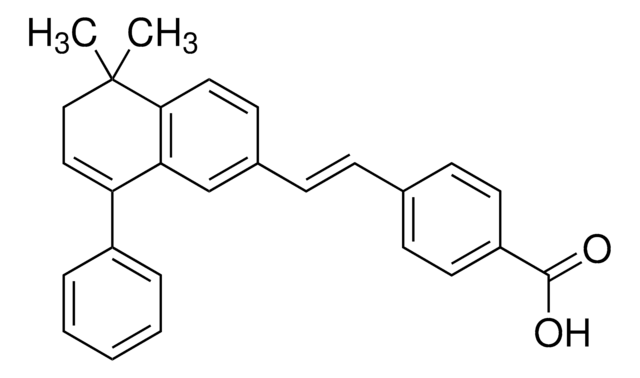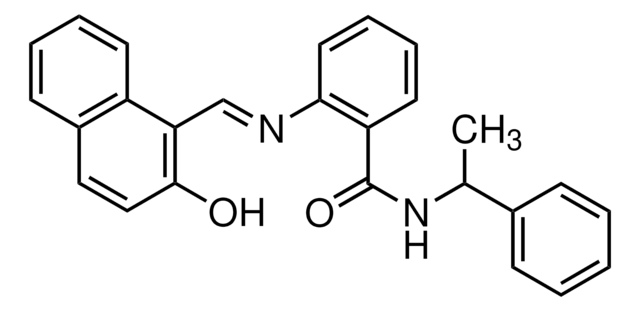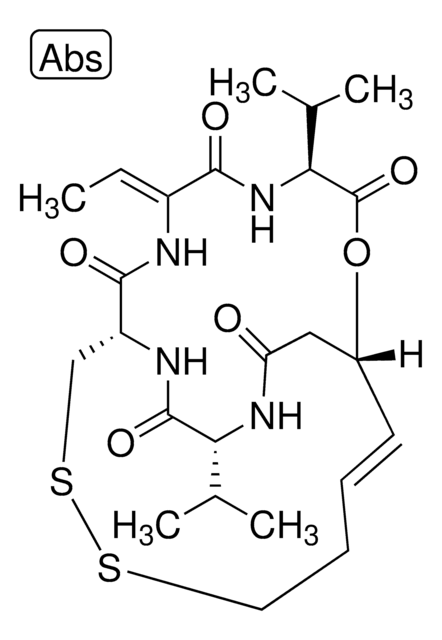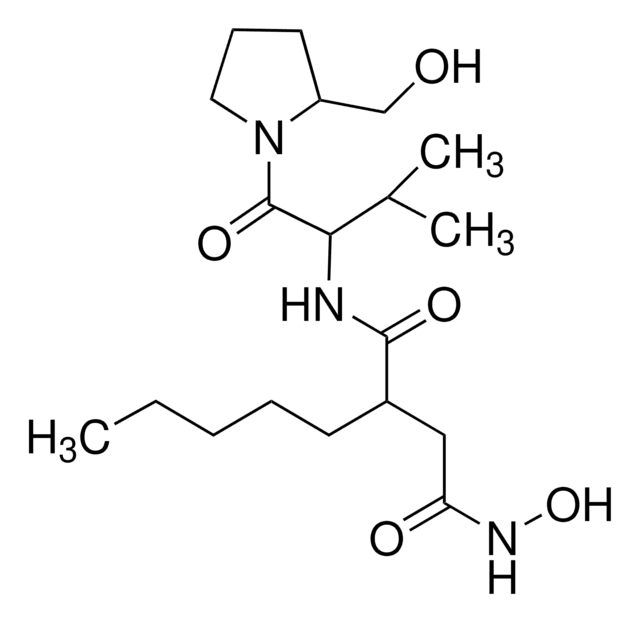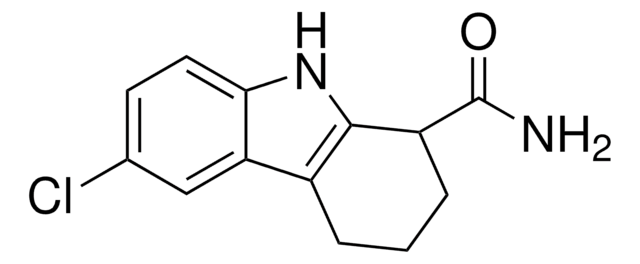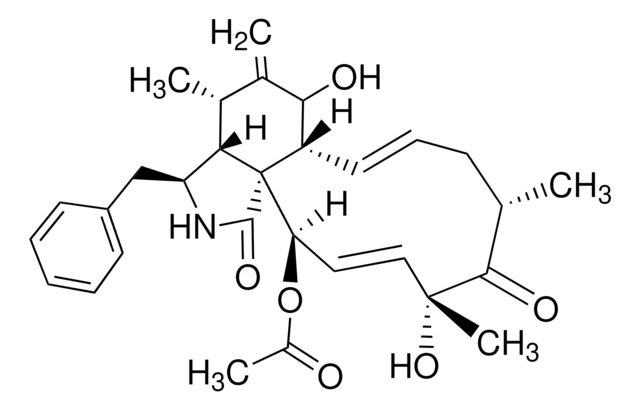A8851
Apicidin
≥98% (HPLC), from microbial
Sinonimo/i:
Cyclo[(2S)-2-amino-8-oxodecanoyl-1-methoxy-L-tryptophyl-L-isoleucyl-(2R)-2-piperidinexcarbonyl]
About This Item
Prodotti consigliati
Origine biologica
microbial
Livello qualitativo
Sterilità
non-sterile
Saggio
≥98% (HPLC)
Forma fisica
solid
Solubilità
DMSO: ~1 mg/mL
Spettro attività antibiotica
parasites
Modalità d’azione
enzyme | inhibits
Condizioni di spedizione
wet ice
Temperatura di conservazione
−20°C
Stringa SMILE
[H][C@]12CCCCN1C(=O)[C@@H](NC(=O)[C@H](Cc3cn(OC)c4ccccc34)NC(=O)[C@H](CCCCCC(=O)CC)NC2=O)C(C)CC
InChI
1S/C34H49N5O6/c1-5-22(3)30-34(44)38-19-13-12-18-29(38)33(43)35-26(16-9-7-8-14-24(40)6-2)31(41)36-27(32(42)37-30)20-23-21-39(45-4)28-17-11-10-15-25(23)28/h10-11,15,17,21-22,26-27,29-30H,5-9,12-14,16,18-20H2,1-4H3,(H,35,43)(H,36,41)(H,37,42)/t22?,26-,27-,29+,30?/m0/s1
JWOGUUIOCYMBPV-PYAAAQPJSA-N
Descrizione generale
Applicazioni
Azioni biochim/fisiol
Caratteristiche e vantaggi
Codice della classe di stoccaggio
11 - Combustible Solids
Classe di pericolosità dell'acqua (WGK)
WGK 3
Punto d’infiammabilità (°F)
Not applicable
Punto d’infiammabilità (°C)
Not applicable
Dispositivi di protezione individuale
Eyeshields, Faceshields, Gloves, type P3 (EN 143) respirator cartridges
Certificati d'analisi (COA)
Cerca il Certificati d'analisi (COA) digitando il numero di lotto/batch corrispondente. I numeri di lotto o di batch sono stampati sull'etichetta dei prodotti dopo la parola ‘Lotto’ o ‘Batch’.
Possiedi già questo prodotto?
I documenti relativi ai prodotti acquistati recentemente sono disponibili nell’Archivio dei documenti.
I clienti hanno visto anche
Articoli
Carcinogenesis and Epigenetics
Epigenetic modifications are thought to occur through two key interconnected processes—DNA methylation and the covalent modification of histones.
Il team dei nostri ricercatori vanta grande esperienza in tutte le aree della ricerca quali Life Science, scienza dei materiali, sintesi chimica, cromatografia, discipline analitiche, ecc..
Contatta l'Assistenza Tecnica.
